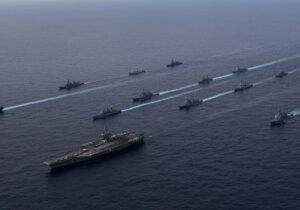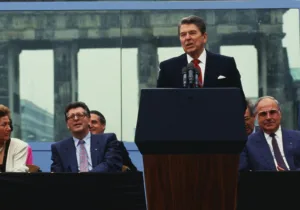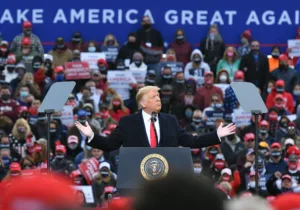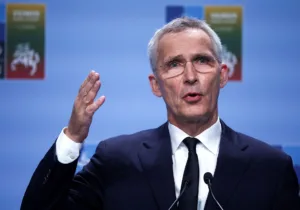Since the beginning of the Russo-Ukrainian war, a common concern has been that mission fatigue in the West could reduce support for Ukraine as the months and years of conflict drag on. On the other hand, the Russian regime could persist due to its stranglehold on the information space in its country, as well as through sheer indifference to popular opinion. However, contrary to the more common aforementioned narrative, the facts can be read differently to suggest that Western resolve is actually more resilient than Russian society’s support for the war. There is an argument to be made that Russia may perhaps be more threatened by fatigue than the alliance backing Ukraine, something worth considering as a counterweight to the more common perspective.
In support of this more optimistic view, one can juxtapose two recent surveys. The first comes from the United States. On October 5, a new Reuters-Ipsos poll found that Americans favored sending arms to Ukraine at 41% versus 35% in opposition. This does mean that backing for the provision of weaponry had declined by five percentage points since May. However, it should be noted that support showed “a sharp rise” in June. If the figure can increase as well as decrease, that suggests that the issue is not simply fatigue which consistently depresses support for fighting Russia with time, but rather Ukraine’s sluggish battlefield performance in recent months. Therefore, a breakthrough, which may be heralded by the beachhead in Kherson or the arrival of F-16s, could reverse the decline. In any case, the data still show that a plurality supports arming Ukraine. Notably, the issue is more controversial in the United States than in most other Western countries.
The second poll comes from Russia. Bloomberg reports that in a survey conducted among Russians in late October, 48% stated “it was time to negotiate a peace deal,” whereas only 39% were for “pressing on with the war,” showing a plurality favors a ceasefire. Support for negotiations was the strongest it had been since April 2022, when the organization which produced the poll on the invasion. Additionally, 58% of respondents were against a hypothetical further mobilization.
This reporting should perhaps be qualified, as the same study yielded other, less encouraging results. For instance, it found that 52% of respondents opposed a “withdrawal of troops,” whereas 32% supported it. At times, the responses seem almost schizophrenic. Thus, 25% oppose “offensive operations” – a smaller share than supports withdrawing troops! A majority thinks Russia is moving “in the right direction,” but a large plurality thinks Russians’ well-being will deteriorate over the next one to two years. 56% think Russia is waging its invasion “successfully,” yet 74% say they would support a peace agreement signed by Putin “tomorrow,” with just 18% opposed. Interestingly, 50% distrust official accounts of the state of the war, as opposed to 44% who trust them. When one looks past the confusion, a whole array of measures suggests that support for the war has declined to the lowest level since its outset.
Depending on which data points are considered more significant, one could argue that the results still show majority support for the war, but opinion polls in Russia do appear to be skewed by a fear of answering truthfully. In April 2022, a study designed to eliminate such bias indicated that 68% of Russians in the sample used claimed to support “[a]ctions of the Russian armed forces in Ukraine” when asked about that specific issue. However, the true figure was only 53%, as shown by a “list experiment” which asked the same question in a more roundabout way. If one assumes, rather unscientifically, that the same gap of 15 points applies to the new data, then true support for continuing the war could be at just 24%. It seems highly unlikely to be that low in reality, but the essential idea is that polls probably overstate how favorably Russians view the war. Russian Field, the company behind this poll, is linked to the Russian opposition, but its past findings seem to be reliable and consistent with those of other polling agencies.
There are further indications that the Russian public may be souring on the war. The British Ministry of Defense’s intelligence update for November 20 focuses on the growing dissatisfaction among Russian soldiers and their families. This discontent is elicited by what seems to be “indefinitely extended combat deployments of personnel without rotation.” In early November, the spouses of Russian servicemen held an open demonstration in Moscow, an apparently unprecedented occurrence during this war, and called for their husbands to be given a break.
Other anecdotal evidence likewise suggests that a substantial portion of the population is fed up with the Kremlin’s military actions, even sometimes taking mild risks to protest. In November, the governor of the Komi Republic, a province within Russia, grumbled that there were too few public expressions of support for the war, including on public transportation. According to him, the contractors responsible for public transport refused to hang up militarist inscriptions, citing concerns that such an action might provoke vandalism. This story may be indicative of popular moods in Russia.
It is perhaps significant that the Komi Republic is largely peopled with ethnic Russians, though not as overwhelmingly as Moscow and Saint Petersburg. Accordingly, it is not among the regions where one would most expect protests to take place. Alexey Kovalev observes that casualties of the fighting in Ukraine have been disproportionately borne by Russia’s ethnic minorities. Moreover, the “ethnic republics” from which those soldiers are drawn are some of the country’s “poorest regions,” and the Russian Field survey finds lower enthusiasm for the war among poorer citizens.
Even if Russians clearly favored ending the war in theory, that would not necessarily translate into insurmountable pressure on the government. However, as the authors of the list experiment argued, “popular support” is necessary for “actors from within the elite” to challenge a regime like Vladimir Putin’s. In this way, the common man’s opinions may be highly consequential for the Kremlin.
An important aspect of Russian attitudes to the war is their implications for the prospect of future mobilization. As mentioned, a solid majority seems to oppose any further mass conscription. Yet such a measure may become increasingly necessary as tactical trends continue. Judging by the tidal wave of emigration occasioned by the first mobilization, this is a serious issue for the Russian public. Time will tell whether the Kremlin will continue to avoid drafting more men and risk compromising its military or choose mass conscription, potentially triggering backlash from the Russian population. Russia’s presidential elections in March are not meaningful like Western elections are, but nevertheless serve as a temperature check on the public’s mood; their results will likely inform Putin, and the West, of how much political capital Russia’s ruler still has to spend.






 Sponsor a student for Christianity & National Security 2024
Sponsor a student for Christianity & National Security 2024